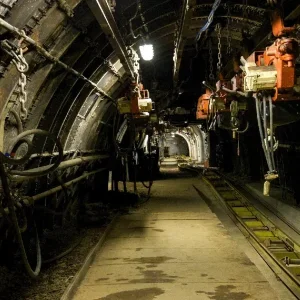A need for two cranes with hook heights of 4.2m in a building with a clearance height of only 4.8m was a challenge met by Granada Material Handling. The Midlands division of the UK-based company has designed, built and installed the 3.2t capacity double girder cranes and the free-standing runway gantries for a new glass toughening factory near Wembley in London.
Super Toughened Glass Ltd is expanding its operations into a new 3,000m2 building, part of a £5m ($7.25m) project to double turnover from the current £3m ($4.4m). Extra employees will be needed, taking the total to around 90 people. Capacity of the new factory will be 5,000t of flat glass a month when it is up and running in November.
The company specialises in toughening sheet glass, much of which comes from manufacturer Pilkington, prior to distribution for use in applications such as patio doors. To unload the packs of glass from the Pilkington delivery trucks a minimum clearance height from the floor to the hook of 4.2m was essential, according to Granada sales engineer Mark Sidwell.
Granada had previous experience in this area and proposed a double girder crane structure design allowing the beams and hoist to fit into the 600mm available height. The bespoke design allows the hoist to run inside the crane beams to give the best possible hook height. Granada has previously supplied this type of crane to other glass toughening companies and to the automotive supply industry.
Granada won the £52,000 ($75,000) order against competition from both home and abroad. One German manufacturer asked to quote for the project came only as close as 200mm over on the hook height, claims Granada divisional director Bob McLoughlin.
All design work, using CAD software, and fabrication work on both the cranes and the runways was completed in-house at the Midlands division premises. Load testing was done pre-delivery at Granada and the cranes were commissioned on 6 September. Due to high downtime costs if production is affected the cranes are to be maintained by Granada’s service division on a 24 hour callout.
How it was done
To meet the 4.2m minimum clearance height criteria a number of design details and modifications were needed because the total height available was only 4.8m which only left 600mm for the crane. Granada, main agent for SWF in the UK, chose to use the SWF Nova wire hoist rope unit on the 12m and 13m span cranes because of its hook approach and true vertical lift features (Fat drum June/July01, p18), Sidwell says.
Commenting on the project Bob McLoughlin says: “The bespoke design criteria was a challenge for our CAD department. A total of 80 hours design time was needed to provide a suitable solution. A large proportion of the time was spent redesigning hoist crab and beam-end carriage connection details. In addition, to gain every last inch, the long travel motor connection boxes were moved from the top to the side of the casings.’’
The standard SWF crab units were modified by cutting them and putting in haunches on the cross beam so the hoist units sit between the bridge beams rather than underneath them to reduce height. For the same reason the crab units run on the bottom inside flange of the bridge beams instead of running on the top surface. Steel bar, 40mm x 30mm, was welded onto the flange for strength. The vertical dimension or height of the bridge beams is lower, at 358mm, and of heavier section, than what would be used as standard on cranes of this span and capacity that have no height restriction.
The conductor system – a finger-proof, three-phase-and-earth Colton T-bar – runs along the inside of the runway beams. It was mounted there instead of below the runway beam to obtain the necessary clearance height for trucks to pass underneath. Cable termination boxes on the long travel motors were turned so the cable entry was horizontal rather than going in from top on the standard units.
Both cranes are dual speed on all motions as standard and the standard-fit Micromove inverter controls acceleration and deceleration on both the long and cross travel motions to prevent load sway. Conrols are pre-set at the factory but the ramps for the slow and fast speeds can be altered on site using dip switches. The same adjustment can be made for slowing the crane without load sway. There is no inverter control on the hoist motion, even though it is available as an option, because the standard two-speed type was sufficient for this application, Sidwell says.
Both cranes are controlled from pendants with two-stage push-buttons and protection to IP 65. The pendants run independently of the hoist trolley so that the operator can maintain a safe distance from the load. Motors and control panels are sealed to IP 54 which provides sufficient protection against water ingress from, for example, a leak in the factory roof, according to Sidwell.
The factory layout dictated a non-standard gantry configuration. The two 33m-long gantries are supported by free standing gantry legs bolted to the factory floor. Spacings between the legs, at 4.2m and 6m, were designed to suit the factory equipment and maximise the areas available for glass delivery and collection. The 6m spacings are positioned to allow the delivery trucks to enter the building for loading and unloading. In the original design a new floor had been allowed for but that was dropped for cost reasons. The runway stanchions had already been fabricated, however, and packing plates had to be put in between the top of the stanchions and the runway beams to get the 4.2m hook height now that there was not going to be a new floor.
Even installing the cranes involved some non-standard equipment. Granada makes special slings that reduce the height needed on the mobile crane jib as it lifts the crane in. These slings also cause less damage to the crane during installation than chains, Granada claims.
There are plans to install two further cranes in the plant at the end of next year when work patterns have been established and the ideal location can be determined.






